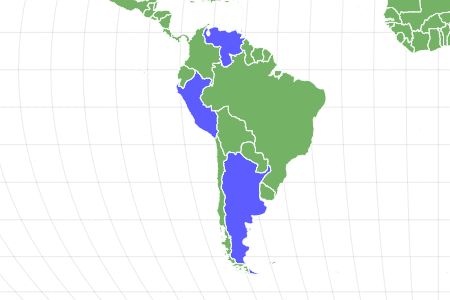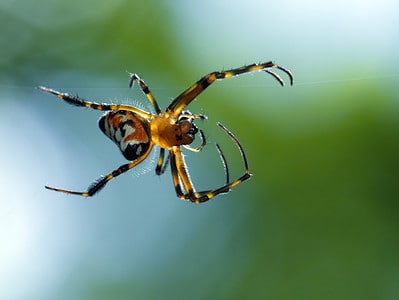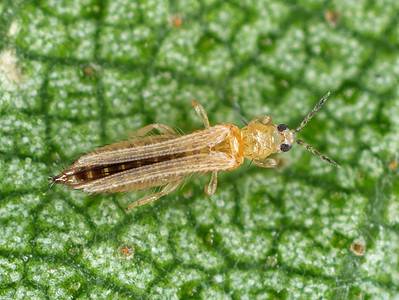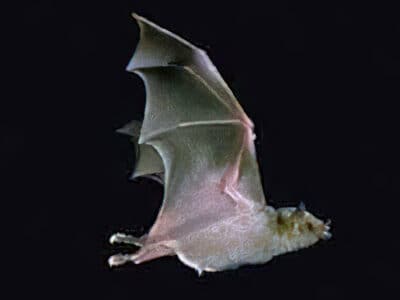Largest terrestrial predator of the Cenozoic era
Advertisement
Barinasuchus Scientific Classification
- Kingdom
- Animalia
- Phylum
- Chordata
- Class
- Reptilia
- Order
- Crocodylia
- Family
- Sebecidae
- Genus
- Barinosuchus
- Scientific Name
- Barinosuchus arveloi
Read our Complete Guide to Classification of Animals.
Barinasuchus Conservation Status
Barinasuchus Facts
- Prey
- Likely other reptiles, mammals, and birds
- Fun Fact
- Largest terrestrial predator of the Cenozoic era
- Biggest Threat
- Geologic and climate changes
- Most Distinctive Feature
- Long legs for running on land
- Distinctive Feature
- Ziphodont teeth with sharp serrated edges
- Other Name(s)
- Barinasuchus arveloi
- Habitat
- Land, possibly in wooded or open areas near the giant wetlands of what is now South America
- Diet
- Carnivore
- Favorite Food
- Meat
- Number Of Species
- 1
- Location
- Argentina, Peru and Venezuela
Barinasuchus Physical Characteristics
- Weight
- Estimated 3500 to 3800 pounds
- Length
- Estimated 20 to 32 feet
- Aggression
- High
View all of the Barinasuchus images!
The Barinasuchus was the largest terrestrial predator to live in the Cenozoic era!
The Barinasuchus lived during the early Cenozoic era, from the mid-Eocene epoch until the mid-Miocene. It was the largest terrestrial predator known to have lived during the so-called Age of Mammals. This huge reptile, which is estimated to have been up to 32 feet long, lived its life on land, like the other members of the Sebecidae family. Unlike other semi-aquatic crocodylomorphs, it had long legs better suited for running than swimming.
Named for Barinas, Venezuela, the city near where one of the specimens was found, this gigantic reptile is estimated to have been about the size of an Allosaurus. It had a skull the size of the Daspletosaurus, a direct ancestor of Tyrannosaurus rex, and had serrated knife-like teeth that were very similar to those of the therapod dinosaurs.
Incredible Barinasuchus Facts
- Like many other extinct reptiles, Barinasuchus had similarities to modern crocodilians, but it was actually from the Sebecidae family.
- Like other Sebecids, Barinasucus was terrestrial, not semi-aquatic.
- Barinasuchus had long legs situated directly under its body, much like a large mammalian predator. These were good for running on land but not for swimming.
- Only three Barinasuchus specimens have been found, and none included bones posterior to the skull.
- Barinasuchus lived in what is now South America and probably feasted on a variety of Miocene mammals, birds and other reptiles.
Description and Size

As the largest terrestrial predator of its time, the Barinasuchus probably ate pretty much any animal that crossed its path.
©3,080 × 868 pixels, file size: 192 KB, MIME type: image/png – License
Almost everything we know about the size and appearance of Barinasuchus arveloi is an educated guess. That is because only three specimens have been found, each a partial skull, and no other bones. A bit more is known about other members of the Sebecidae family, which B. arveloi was placed in based on the fossils scientists did have available.
Based on other Sebecids, Barinasuchus would have had long legs situated directly under its body. These legs would have looked and functioned more like those of large mammalian predators than modern crocodiles. They would have been excellent for the terrestrial life of this huge reptile. They would not have been great for swimming.
The tail of the Barinasuchus would have probably been shorter than semi-aquatic crocodylomorphs in relation to the rest of its body. Its estimated body length, using similar reptiles for comparison, would have been somewhere between 6.3 and 10 meters, or 20 to 32 feet. That is at least 50 percent larger than the next biggest terrestrial predator at that time.
Its weight is harder to estimate, given the lack of bones to study. Researchers believe it was between 1,610 and 1,720 kilograms, or roughly 3,500 to 3,800 pounds. This is about the size of the theropod, Allosaurus fragilis.
A Look at the Skulls
Based on the three known specimens, the skull of B. arveloi is estimated to be between 95 cm and 115 cm in length and about 40 cm high. The snout was approximately the same size of the Daspletosaurus, a theropod thought to be the direct ancestor of Tyrannosaurus rex. This massive snout was shorter and deeper, relative to its size, than those of modern crocodilians. It had more places where muscles would have attached, giving it a very strong bite.
The Barinasuchus had teeth much like theropods. They were ziphodont in structure, meaning that they were compressed laterally, serrated and curved backward. Those sharp, serrated edges of the teeth, like a giant steak knife, were perfectly adapted for ripping flesh.
What Did Barinasuchus Eat?
As the largest terrestrial predator of its time, the Barinasuchus probably ate pretty much any animal that crossed its path. Because it lived in the early Cenozoic era, its food sources would have likely included other reptiles, mammals and even large birds.
Depending on its metabolism, the Barinasuchus may have needed to conserve energy when hunting. It could have easily done this by waiting, hidden along wooded paths, and ambushing its prey in a quick attack. Of course, with it’s enormous size and long legs, it would not have had a hard time chasing other animals. That is, at least over short distances.
Habitat – Where and When It Lived
Barinasuchus lived from the middle of the Eocene epoch to the middle of the Miocene, based on the age of the rocks surrounding the three known specimens. This would put its earliest emergence somewhere between 56 and 33.9 million years ago. It is believed to have gone extinct during the Miocene epoch, around 12 million years ago.
Three specimens have been found to date, each in the western part of what is now South America. Although sprawling wetlands and rivers covered much of northern South America, Barinasuchus lived its life on land, not in the water.
Threats and Predators
Barinasuchus was most likely the apex predator in the time and place where it lived. As such, it may have faced threats in the form of large, reptilian competitors. However, it was not likely to be eaten by other predators. Instead, it is thought that geologic and climate changes were the biggest threats that this reptile endured.
Discoveries and Fossils – Where Was Barinasuchus Found?
Barinasuchus specimens have been found in three locations in South America. One specimen was found in rocks from the mid-Eocene epoch in the Divisadero Largo Formation in Argentina. The other two were both found in rocks from the mid-Miocene epoch. One was discovered in the Parángula Formation near Barinas, Venezuela. Another was located in the Ipururo Formation in Peru. All three specimens were partial skulls, with no other bones found.
Extinction – When Did Barinasuchus Die Out?
It is thought that Barinasuchus went extinct around 12 million years ago. Researchers believe that a combination of factors contributed to the extinction of this and many other species during the Miocene epoch. These would have included the uplift of the Andes mountain range and the drying of the wetland and massive river systems in South America. Cooling atmospheric temperatures at the time would have also been difficult on large, ectothermic animals like the Barinasuchus. It most likely suffered due to its inability to regulate its own body temperature in the changing climate.
Similar Animals to the Barinasuchus
- Deinosuchus – A reptile that lived in North America 82 to 73 million years ago. Roughly the same size as S. gregorii.
- Sarcosuchus – A giant crocodyliform that resided in the area that is now the Sahara. It lived approximately 133 to 112 million years ago.
- Smilosuchus – A crocodile-like reptile from the Mesozoic era that lived in an area from Arizona to the Texas panhandle.
Barinasuchus FAQs (Frequently Asked Questions)
When was Barinasuchus alive?
Barinasuchus lived from the mid-Eocene epoch, which began 56 millon years ago, to the mid-Miocene epoch. It was perhaps the largest terrestrial predator to live in the Cenozoic era.
What happened to Barinasuchus?
The single Barinasuchus species died out around 12 million years ago, probably due to geologic and climate changes in South America.
How many species of Barinasuchus existed?
There was one species – Barinasuchus arveloi.
How big was Barinasuchus?
Barinasuchus is estimated to have been from 20 to 32 feet long and between 3,500 and 3,800 pounds.
What did Barinasuchus eat?
Barinasuchus arveloi was an apex predator that probably ate other reptiles, mammals and even birds.
Was Barinasuchus a good swimmer?
Barinasuchus was probably not a good swimmer. It had long legs more adapted to running on land than being in the water.
Where was Barinasuchus found?
Only three Barinasuchus specimens have been found, all in South America. They were found in Argentina, Venezuela and Peru.
Thank you for reading! Have some feedback for us? Contact the AZ Animals editorial team.
Sources
- Mind at.org, Available here: https://www.mindat.org/taxon-8542238.html
- Memoirs of Museum Victoria, Available here: https://museumsvictoria.com.au/media/4260/363-377_mmv74_molnar_6_web.pdf
- Fossilworks, Available here: http://www.fossilworks.org/cgi-bin/bridge.pl?a=taxonInfo&taxon_no=192478

















